Crashing is part of cycling as crying is part of love.
Johan Museeuw
- The Lion of Flanders
Crashing is part of cycling as crying is part of love.
Johan Museeuw
- The Lion of Flanders

Conquer the Mountain. Find Your Freedom.

Conquer the Mountain. Find Your Freedom.
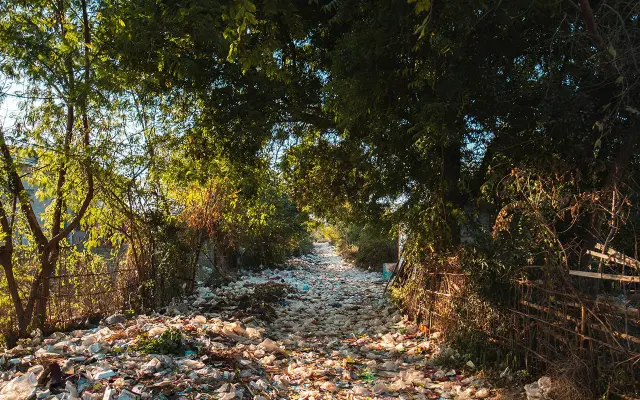
It was lunchtime when I met my friend at the trailhead. A nearby construction site meant workers were taking a break in the cool shade by the entrance, which seemed like a convenient spot for them to eat.
Unfortunately, when they left, a mess of sandwich wrappers, plastic cups, and soda cans littered the ground where they’d been sitting. Feeling a surge of frustration, I thought to myself:
How to Reduce Your Environmental Impact When Riding a Mountain Bike?
Mountain biking offers exhilarating rides and breathtaking scenery. But with great trails comes great responsibility! This post dives into responsible mountain biking practices based on Leave No Trace (LNT) principles.
Let’s explore how to minimize our impact and keep the trails pristine for everyone.
Respect the Ride, Respect the Environment: Leave No Trace isn’t just about packing out your trash. It’s about minimizing your overall impact on the trails and the ecosystems they weave through. Responsible mountain biking practices ensure the beauty and health of the trails for generations of riders to come.
Happy Trails for All: Sharing the trails means respecting others. This principle helps prevent conflicts and create a positive experience for everyone who enjoys the outdoors, from hikers and wildlife to fellow mountain bikers.
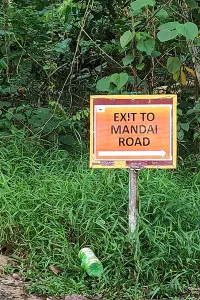
Leave Only Footprints, Take Only Memories: This iconic motto perfectly sums up responsible outdoor recreation. By minimizing what you leave behind, you create space for others to enjoy the trails and leave with unforgettable memories of their own.
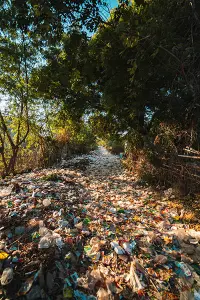
Pack It In, Pack It Out: Mountain bikers generate waste – from gel wrappers to empty water bottles. The golden rule: Pack it in, Pack it out. Everything you bring on the trail, you must take back out with you. Consider using reusable alternatives like water bottles and food containers to reduce waste in the first place.
You can also designate a pocket for litter and leftover food. Use restroom facilities before hitting the trail. If necessary, dispose of waste properly in designated areas or by digging catholes at least 200 feet from water sources and trails.
Leave What You Find: The beauty of the trails extends beyond the absence of litter. Respect the natural environment and cultural heritage of the trails. Leave rocks, plants, and historical or cultural artifacts undisturbed for others to enjoy.
Minimize Disruption: Mountain bikes can unintentionally introduce or transport non-native plant seeds or tiny critters on your tires.
Before and after your ride, check your clothing, bike, and gear to prevent spreading these unwanted guests that can disrupt the ecosystem’s delicate balance.
Although mineral oil or DOT fluid have low environmental toxicity, avoid bleeding them (breaks/ forks) at the trails.
Also avoid introducing or transporting non-native species. Check your clothing, bike, and equipment before and after each ride for seeds. Watch out for invasive stowaways, especially if you love biking in different countries.
Tread Lightly: Stay on designated trails to avoid creating new paths and damaging vegetation. This helps maintain the trail’s integrity, protects the surrounding environment, and ensures a smooth ride for everyone.
Beyond the Trash Bag: Minimizing Your Impact
Minimize Skidding: Excessive skidding and braking not only shred your tires but also tear up the trail surface. I know, you also think skidding looks cool. But hone your skills for smooth riding techniques that protect the trail’s integrity and minimize soil disturbance. Bonus: smoother riding saves those tires too!
Respect Wildlife: Remember, animals call the trails home too. Yield the right of way to wildlife, maintain a safe distance, and avoid disturbing their habitat. This allows them to feel safe and continue their natural activities.
Observe wildlife from a distance, avoid following or approaching them. Never feed animals. Control pets at all times or leave them at home. Avoid wildlife during sensitive times like their mating and nesting seasons.
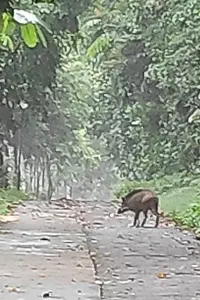
Dusk and dawn are crucial feeding times for many animals, particularly predators. Our presence during these periods can disrupt their hunting and force them to expend extra energy searching for food elsewhere.
Minimize Noise: Let the sounds of the forest be your soundtrack. Loud music can disrupt the tranquility of nature and startle wildlife. Keep noise levels reasonable and enjoy the peace and quiet of the outdoors.
Plan Ahead and Be Prepared: Ensure your bike is in top shape – a well-maintained bike minimizes the risk of breakdowns and frustrating repairs on the trail. Pack essential tools and a repair kit to handle minor fixes. Most importantly, wear a properly fitted helmet for maximum safety.
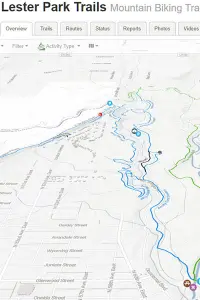
Know Before You Go: Not all trails are created equal. Check with land managers, local bike shops, or apps like MTB Project for up-to-date trail information. This includes closures, regulations, difficulty levels, and any special considerations for the trail you’ve chosen. Knowing before you go ensures a smooth ride and avoids any unpleasant surprises.
Respect the Trail: Stick to designated trails and avoid riding on muddy, excessively wet, or icy trails. Choose established trails, authorized slickrock areas, dirt roads, or pavement when available. This helps prevent erosion, protects vegetation, and avoids creating new trails.
Mind the Conditions: When trails are muddy, excessively wet, or icy, it’s best to choose a different route. Riding on compromised surfaces not only damages the trail but also increases your risk of slipping or crashing. Opt for established trails, authorized slickrock areas, dirt roads, or pavement when weather conditions require a more stable ride.
Even the most dedicated riders can encounter adversities when trying to minimize their environmental impact. Here are some common adversities you might encounter while striving to be a responsible mountain biker.
Limited Trash Receptacles: Not all trails have frequent trash cans. You might need to carry your trash for long distances before finding a proper disposal point.
Bulky Waste: Repairing a flat tire on the trail can generate bulky waste like a punctured inner tube or ripped tire boot. Carrying these items with you until you find a proper disposal can be inconvenient.
Food Spoilage: Depending on the length and weather conditions of your ride, food can spoil or leak in your backpack. Packing leakproof containers and planning meals that won’t spoil easily becomes crucial.
Muddy Trails: Sticking to designated trails during muddy conditions can be difficult. Sometimes, the only clear path might be slightly off-trail, creating a dilemma between staying on route and causing minor erosion.
Crowded Trails: Sharing the trail with other riders, especially on popular routes, can make finding a private spot for bathroom breaks challenging. Using designated facilities or packing a WAG bag (waste alleviation and gelling) system might be necessary.
Limited Water Sources: Not all trails have reliable water sources. Carrying enough water for the entire ride, especially during hot weather, can add significant weight to your backpack.
Forgetting Reusable Items: In the excitement of hitting the trail, you might forget reusable water bottles or food containers, leading to reliance on single-use options and generating waste.
Accidental Spills: Spilling food or drinks on the trail can happen accidentally. Packing a small towel or wipes for quick cleanups helps minimize your impact. Monkeys jumped on my back pack once they smelled spilled food.
Difficulties with Packing It Out: Carrying all your trash, especially bulky items, for a long ride can be tiring and test your packing skills. Strategically packing your backpack and using lightweight gear can help.

Unpredictable Weather: Sudden downpours can make it difficult to find proper shelter for waste disposal or repairs, potentially leading to temporary littering or delaying fixes.
Wildlife Encounters: Encountering curious animals might require you to adjust your LNT practices. For instance, storing food with strong odors in critter-proof containers becomes more important.
Trail Closures or Restrictions: Sometimes, trail closures or restrictions might force you to take alternate routes with limited LNT facilities, requiring extra planning and improvisation.
Minimizing our environmental impact isn’t a solo mission. Spread the stoke and share the LNT principles with your fellow riders! Talk to them about responsible trail etiquette, the importance of packing out trash, and minimizing their impact on the trails.
By working together, we can ensure that these beautiful mountain bike trails remain pristine sanctuaries for generations of riders and wildlife to come. So next time you hit the trails, remember: Ride Green, Ride Safe, Ride Together!
Dive deeper into Leave No Trace principles! Learn more from the U.S. Fish and Wildlife Service here
Keep exploring! Dive deeper with related posts. HERE